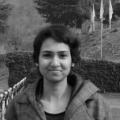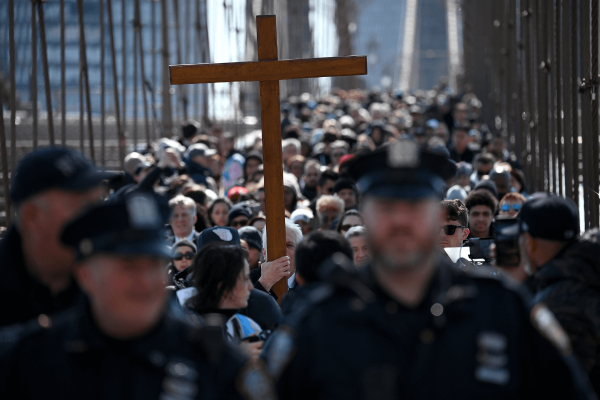Richard D'Souza and Eric Bell of the University of Michigan recently grabbed headlines for their discovery: The Milky Way once had a ‘sibling,’ which was devoured by the neighboring galaxy of Andromeda about 2 billion years ago. Their study, published in the Nature Astronomy journal last month, has its implications on the understanding of how galaxies evolve over time.
D'Souza, the lead author of the study, hails from the Indian state of Goa and interestingly, he is also a staff member of the Vatican Observatory, an astronomical research institute supported by the Roman Catholic Church.
The Observatory, located in Castel Gandolfo about 16 miles from Rome, was established by Pope Leo XIII in 1891 “so that everyone might see clearly that the Church and her Pastors are not opposed to true and solid science, whether human or divine, but that they embrace it, encourage it, and promote it with the fullest possible devotion.”
I interviewed D’Souza — who holds bachelor’s degrees in philosophy, physics, and theology, a master’s degree in physics, and a Ph.D. in astronomy — about his study of philosophy and theology alongside physics and his work at the Vatican Observatory.
This interview has been lightly edited for length and clarity.
Rishika Pardikar: You have multiple degrees, in science, philosophy, and religion. Could you elaborate on how these subjects have complemented each other well enough to bring you to your discoveries?
Richard D'Souza: I am not sure if these multiple degrees have a direct bearing on my scientific discoveries. But I believe that it has helped me in a number of others ways. I would like to highlight three of them: First, to locate my science within the broader scheme of things. Second, to make sense of why it is worth doing my science with other more pressing problems in the world. And third, to communicate these ideas to others effectively. My degrees in philosophy and theology gave me a chance to broaden my thinking. Philosophy taught me how to critique the science I learned in university including its assumptions and adopted worldview. Theology helped me reflect on deeper issues, which motivates all of us humans: Where do we come from, where are we going, and what is the meaning of life? Although I enjoy science, it is a bit restrictive and limited in its approach; philosophy and theology equipped me with tools to think and reflect on a broader set of issues and problems.
Pardikar: Could you describe the role of the [Vatican Observatory] and its most recent scientific explorations and research work?
D’Souza: The Vatican Observatory is a research institution supported by the Vatican and the Catholic Church. In numbers, it has 13 fulltime researchers, working in a diversity of topics, from meteorites, planetary formation, stars, clusters, galaxy evolution, cosmology, and even quantum theories of gravity. It is divided into two locations, with the main administrative unit in the papal gardens at Albano, outside Rome, while the second unit is located in Tucson, Ariz. This second location was started in the 1980s due to an ongoing collaboration with the University of Arizona, which hosts some of the big telescopes in mainland USA. The Vatican too has a 1.8 m telescope on Mount Graham called the VATT (Vatican Advanced Technology Telescope). The Vatican Observatory also has a large number meteorite collection, which is one of the best in the world. Researches use this collection to measure the physical properties of meteorites, which then become a basis for theories of planetary formation.
Pardikar: How did you come to work with the observatory?
D’Souza: I am a Jesuit priest. During my training to be a Jesuit, I studied both theology and astronomy. The Jesuits manage and run the Vatican Observatory. During my master’s in physics in 2004, the members of the Vatican Observatory reached out to me. Eventually, many years later after studies in philosophy, theology, and then a Ph.D. in astronomy, I formally joined the staff of the Vatican Observatory in 2016. Although I am formally associated with them, I went for a postdoc to the University of Michigan, and make occasional short working visits back to the observatory in Rome or their offices in Tucson. I will return to the Vatican Observatory in July 2019.
Pardikar: In December last year, an article in the New York Times stated that the Vatican is “a victim of historical fake news” in the sense that there isn’t much awareness about the scientific explorations made by the Holy See, and on the other hand, facts about Galileo’s troubles with the Church are almost common knowledge.
D’Souza: I believe this to be true. Historically, there are a number of great contributions by priests or monks to the sciences, especially mathematics and astronomy. A number of them are quite famous including the Jesuit Angelo Secchi, who invented stellar spectroscopy, or the Belgian priest, Georges Lemaître, who invented the idea of the Big Bang. Yet, there have been thousand others who have not achieved such fame, but have made valuable contributions to the sciences down the years. This part is unfortunately left out of the narrative.
It is interesting to note that the present dominant narrative of the ‘apparent antagonism of the Church towards science’ really started only in the 19th century with the rise of anti-clericalism in many Western countries. At the same time, the political power of the Church was gradually waning, and there was an added internal problem of how does one interpret Scripture, amidst the flurry of new modern ‘philosophical’ ideas. All this lead to the Church getting a rather bad reputation with regards to the sciences. With our scientific work at the Vatican Observatory, we hope to correct that narrative.
Pardikar: It’s interesting that you brought up Georges Lemaître. About a year ago, the observatory invited scientists from all around the world to talk about the Big Bang, black holes, etc. And the head of the Vatican Observatory, Guy Consolmagno, reiterated a sublime observation, saying, “Lemaître himself was very careful to remind people—including Pope Pius XII—that the creative act of God is not something that happened 13.8 billion years ago. It’s something that happens continually.”
As an outsider to both the fields of science and religion, hearing such statements is refreshingly pleasant not only because there is an acknowledgement of the progress of scientific research but also because it opens up perspectives beyond science — beyond the Big Bang, in the present case. Any further views on this?
D’Souza: One can also interpret Lemaître’s statement in suggesting that it is not the role of science to prove religion. One’s religious faith in God should not be based on scientific theories. This is because scientific theories change and evolve over time. The way we understand the world has changed from Newton and Einstein. Science helps us better understand the world: As our data of the physical world around us increases, so also do our scientific theories get refined or often have a paradigm shift — a term used by the philosopher of ‘science’ Thomas Kuhn — as in the case of the quantum revolution or Einstein’s theory of gravity. If religious faith was based on scientific theories, then every paradigm shift would shake our belief in God.
However, science does not provide us meaning. As human beings, we require meaning to move forward in life: We constantly ask the question “why?“ Without a sense of “meaning,” we have no will to go on in life. Religion gives us this meaning to go forward in life. Now one of the reasons, we are so interested in the question of “creation” is that integral to it, is the question “why”: humans are not only interested in “how” the world came to be, but they also are trying to make sense of the world. They constantly ask after the purpose of the world, creation, and their lives. Often for a religious believer, God’s creative act continues in the world even until today: in the sustenance of creation, in the gift of a new day, in the birth of a child, in a good relationship, or when long-due justice of the poor and underprivileged is finally delivered. These too are part of the creative act of God, and give the human person a sense of purpose and meaning to help him or her move forward.
Got something to say about what you're reading? We value your feedback!







